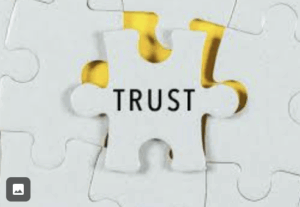When anxiety strikes, it can feel overwhelming—your heart races, your thoughts spiral, and you might even feel disconnected from reality. In those moments, grounding techniques can be powerful tools to bring you back to the present and regain control.
Grounding helps anchor you to the present moment, pulling you away from anxious thoughts and into your physical surroundings. In this post, we’ll explore science-backed grounding techniques to help manage anxiety and stress effectively.
1. The 5-4-3-2-1 Method (Sensory Grounding)
This simple yet effective technique engages your five senses to shift focus away from anxious thoughts and into the present moment.
🔹 How to Do It:
✔️ Name 5 things you can see (a lamp, a tree, your shoes).
✔️ Identify 4 things you can touch (your clothing, a table, your pet’s fur).
✔️ Notice 3 things you can hear (traffic, a fan, birds chirping).
✔️ Find 2 things you can smell (coffee, fresh air, lotion).
✔️ Identify 1 thing you can taste (gum, water, mint).
🧘 Why It Works: Engaging your senses shifts your attention away from anxious thoughts and into your immediate surroundings, helping you feel more present.
🔗 Struggling with chronic anxiety? Our individual therapy services can provide personalized coping strategies.
2. Deep Breathing (Regulating the Nervous System)
When anxiety takes over, your breathing often becomes shallow and rapid. Deep breathing helps activate the parasympathetic nervous system, signaling to your body that it’s safe to relax.
🔹 Try This: Box Breathing
✔️ Inhale deeply through your nose for 4 seconds
✔️ Hold your breath for 4 seconds
✔️ Exhale slowly through your mouth for 4 seconds
✔️ Hold your breath again for 4 seconds
✔️ Repeat until you feel calmer
🧘 Why It Works: Deep breathing lowers cortisol levels, reduces heart rate, and helps bring your body out of “fight or flight” mode.
🔗 Need help managing stress? Read our blog on mindfulness strategies for anxiety.
3. Grounding Through Touch (Tactile Techniques)
Using physical sensations can help ground you when anxiety feels overwhelming.
🔹 Try These Tactile Grounding Methods:
✔️ Hold onto a cold object (ice cube, cold water bottle) to bring awareness to your body.
✔️ Press your feet firmly into the ground and notice the sensation.
✔️ Run your hands under warm water or squeeze a stress ball.
✔️ Wrap yourself in a soft blanket or hug a pillow for comfort.
🧘 Why It Works: These physical sensations draw your attention away from anxious thoughts and into the moment.
4. Mental Grounding (Cognitive Distraction Techniques)
If your thoughts are racing, cognitive grounding techniques can redirect your focus.
🔹 Try These Mental Exercises:
✔️ Name Categories – List types of flowers, dog breeds, or TV shows.
✔️ Math Distraction – Count backward from 100 by 7s or multiply random numbers in your head.
✔️ Say the Alphabet Backwards – This requires full focus, helping shift attention away from anxiety.
✔️ Describe Your Surroundings in Detail – Imagine explaining your environment to someone who’s never seen it.
🧘 Why It Works: Keeping your brain busy with neutral tasks reduces the intensity of anxious thoughts.
5. Movement-Based Grounding (Releasing Nervous Energy)
Physical movement can help release built-up stress and anxiety.
🔹 Try These Movement Techniques:
✔️ Progressive Muscle Relaxation – Tense and release muscle groups one by one, starting with your toes and working up to your head.
✔️ Stretching or Yoga – Gentle stretching helps reconnect you with your body.
✔️ Shake It Out – Literally shake your hands, legs, or whole body to release nervous energy.
✔️ Walk Barefoot on Grass – This connects you with the earth and provides sensory grounding.
🧘 Why It Works: Moving your body releases pent-up energy, shifts focus, and helps regulate stress hormones like cortisol.
🔗 Interested in how nature can help mental health? Read our blog on the power of the outdoors.
6. Visualization (Guided Imagery for Calmness)
Visualization techniques use the power of imagination to create a sense of peace.
🔹 Try This: Safe Place Visualization
✔️ Close your eyes and picture a place where you feel safe and calm (a beach, forest, childhood home).
✔️ Use all your senses—what do you see, hear, smell, and feel?
✔️ Breathe deeply and immerse yourself in the scene.
🧘 Why It Works: Your brain responds to mental imagery almost as if it were real, helping induce relaxation.
🔗 Struggling with anxiety or panic attacks? Our therapists can provide personalized guidance.
7. Object Focus (Anchoring to Reality)
Keeping a physical grounding object nearby can provide instant comfort in anxious moments.
🔹 Try These Grounding Objects:
✔️ A smooth stone or crystal in your pocket
✔️ A small fidget toy or textured item
✔️ A piece of jewelry with sentimental value
✔️ A grounding affirmation card with a reassuring message
🧘 Why It Works: These objects remind you of the present moment and offer a tangible way to self-soothe.
Final Thoughts: Find What Works for You
Grounding techniques are powerful tools for managing anxiety, stress, and overwhelming emotions. Experiment with different methods to find what works best for you, and remember—you are in control of your thoughts and body, even when anxiety feels overpowering.
At Kingston & Co Counseling, we specialize in helping individuals develop personalized coping strategies to manage anxiety and improve mental well-being.
👉 Need extra support? Contact us today to schedule a session and learn how therapy can help you feel more grounded and in control.
✨ Anxiety doesn’t define you. You have the power to calm your mind and reclaim peace. ✨







